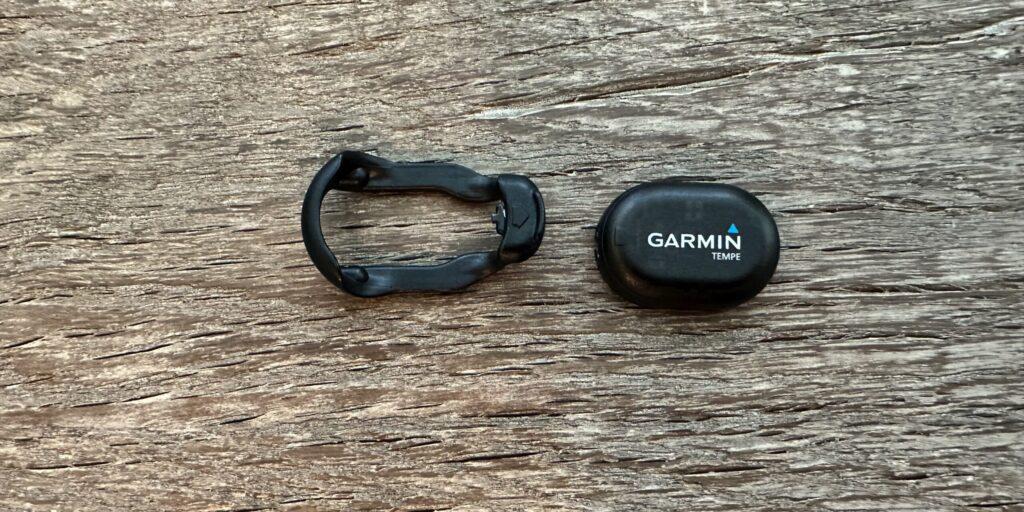During a long ride, staying informed about external conditions is key. Not only do weather and temperature fluctuate throughout the day, but conditions change as a result of diverse changes in elevation and geography that we encounter on long rides. For those who have followed my journey to the Hoodoo 300, you’re aware of the rigorous challenges I’ve faced, especially in combating the soaring temperatures of Southern California.
One of the key tools that’s always accompanied me on this journey is my Garmin Edge 1040 Solar, which I use to track numerous metrics. Yet, as useful as it is, I’ve noticed some discrepancies between its recorded temperature and what I felt was the real ambient temperature. And these discrepancies aren’t minute; we’re talking about a difference that can range from 15-20ºF, or more!
Given the critical importance of temperature in determining hydration needs and gauging performance, these inaccuracies aren’t just mere trivialities. Heat directly impacts how our bodies function and our nutrition and hydration needs during intensive rides, making accurate data not just a luxury, but a necessity.
The Importance of Temperature Awareness in Cycling Performance
For cyclists, understanding ambient temperature is not just about comfort; it’s about optimizing performance, ensuring safety, and making informed decisions during a ride. The body’s physiological response varies across different temperature ranges. From hydration needs to pacing strategies, being aware of the temperature enables cyclists to tailor their approach to the conditions, ensuring they can maintain peak performance while mitigating health risks. The following table provides a comprehensive overview of how cyclists can respond to different temperature ranges, emphasizing nutrition, hydration, pacing, and core temperature management strategies. Dive deeper into each recommendation to understand the why and how of adapting to varying thermal conditions.
| Temp. (°F) | Nutrition | Hydration | Pacing | Core Temperature Management |
|---|---|---|---|---|
| 50-65°F | Consume balanced electrolyte drinks to replenish salts lost in sweat. Prioritize carbohydrate intake to maintain energy levels. | Moderate hydration: 500ml/hr. Lower sweat rate means less fluid loss. | Ideal temperature for peak performance. Maintain regular pacing. | Light-weight, breathable kit. Ventilation helps manage warmth. |
| 65-80°F | Increased carbohydrate consumption can help counteract the energy sapped by heat. | Increased hydration: 750ml/hr. Be mindful of electrolyte balance. | Slightly reduce intensity during peak heat. Utilize heart rate zones to avoid overexertion. | Consider arm coolers and lightweight caps. Regularly pour water over body to aid cooling. |
| 80-95°F | Consume easy-to-digest foods; heat can reduce gut function. Salt tablets can help counteract salt loss. | Vigilant hydration: 1L/hr or more. Electrolyte drinks become critical. | Significantly reduce intensity during peak heat. Focus on maintaining steady effort, not speed. | Wear cooling vests or ice socks. Use UV protective wear and sunblock. |
| 95°F+ | Liquid nutrition can be beneficial, as solid food may feel unappetizing. Monitor for signs of heat-induced nausea. | Hydration is critical: 1.5L/hr or more. Regular sips, not big gulps. | Very conservative pacing. Consider night riding or very early mornings to avoid peak heat. | Frequent breaks in shade. Utilize ice packs on neck and underarms. |
Context & Explanation:
- Nutrition: As temperatures rise, the body diverts blood to the skin to help with cooling, which can reduce blood flow to the gut, affecting digestion. This is why liquid nutrition or easily digestible foods are recommended in higher temperatures.
- Hydration: Sweat rate increases with temperature. Not only do you lose water, but you also lose electrolytes. This can lead to conditions like hyponatremia if you’re not careful about balancing fluid and electrolyte intake.
- Pacing: High temperatures place extra strain on the cardiovascular system. Heart rates can soar, and perceived exertion can increase even at lower speeds. Adjusting pacing strategies ensures you don’t overextend and risk heat-related illnesses.
- Core Temperature Management: While your body has its own mechanisms to try and cool down (like sweating), aiding this process through external means can be beneficial. Cooling vests, for example, can help reduce the core temperature, allowing for better performance and reduced risk of heat-related issues.
Tailoring our strategy based on temperature can be the difference between a successful ride and a potential health risk. Riding without this knowledge is like setting out on a journey without a map. With a clear understanding of how temperature affects our body and the necessary adjustments to make, we can position ourselves to achieve optimal performance under the circumstances.
Enter the Garmin Tempe Sensor
Upon diving deeper into the world of Garmin accessories, I stumbled upon this handy sensor that promises to provide more accurate temperature readings. The Tempe sensor differs from the Garmin Edge’s internal temperature sensor in that it’s specifically designed to measure external temperatures without being influenced by the device’s own heat, and because it is small, it can be mounted just about anywhere.
The installation is relatively straightforward. I chose a spot underneath my saddle to shield it from the blazing sun. Using electrical tape, the Tempe sensor was securely mounted, ensuring it was in the ideal position to capture the true essence of the ambient temperature. A visual of this setup can be seen in the image below.
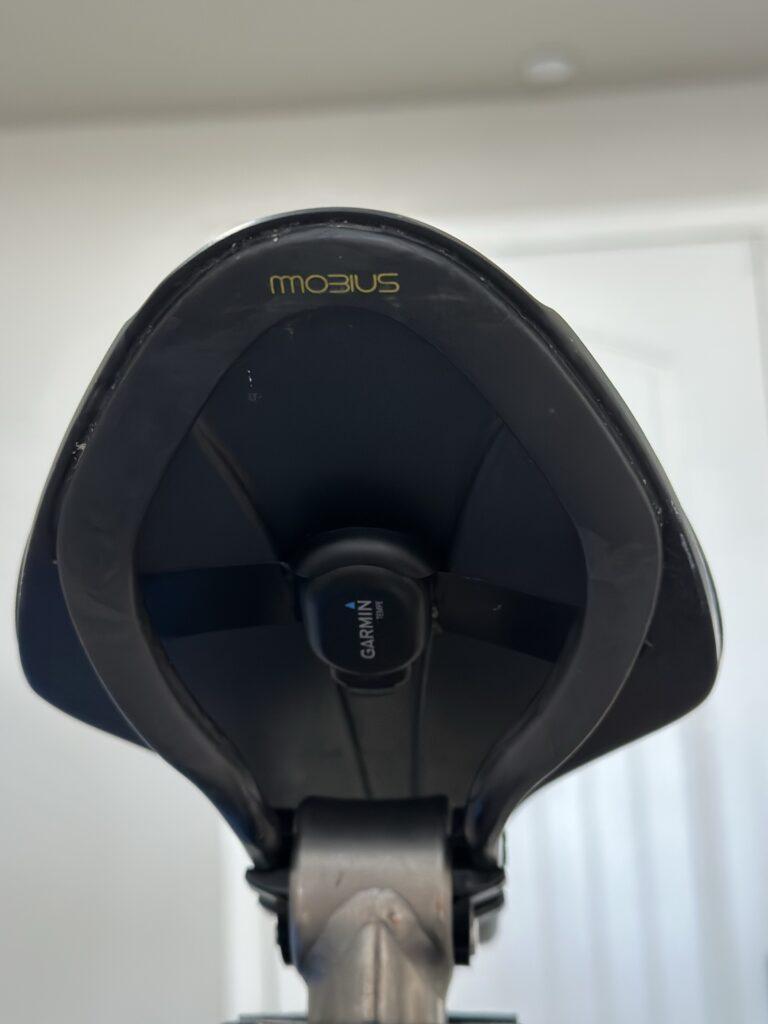
Installing the Garmin Tempe sensor in this manner adds approximately 10 grams to the bike, accounting for the Tempe sensor itself, the mounting clip, and 3 inches of electrical tape. This seems like a fair tradeoff to me, considering the accuracy and usefulness of the data.
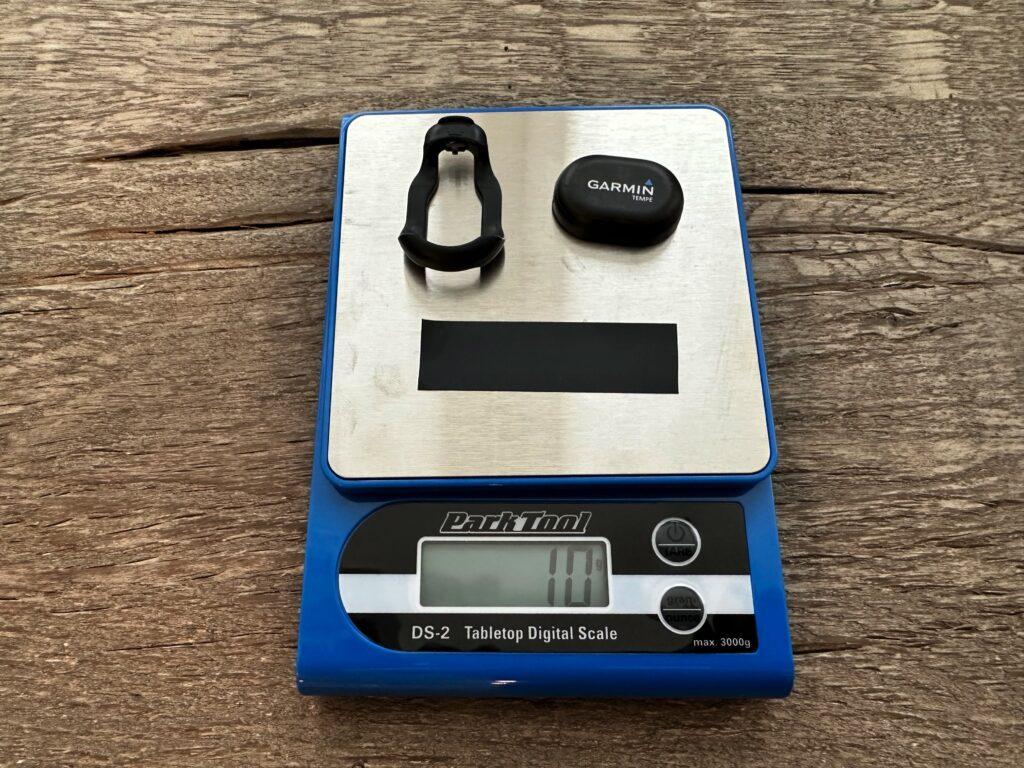
In addition to installing the device itself, a data field must also be added to the Garmin Edge. I chose the Connect IQ™️ Tempe Field by maca88, which allows the user to toggle between battery level, current temperature, max temperature, and min temperature by tapping on the field. (For my purposes, I am only interested in the current temperature.) Here’s a picture of one of my data screens which provides an overview of the current ride and conditions:
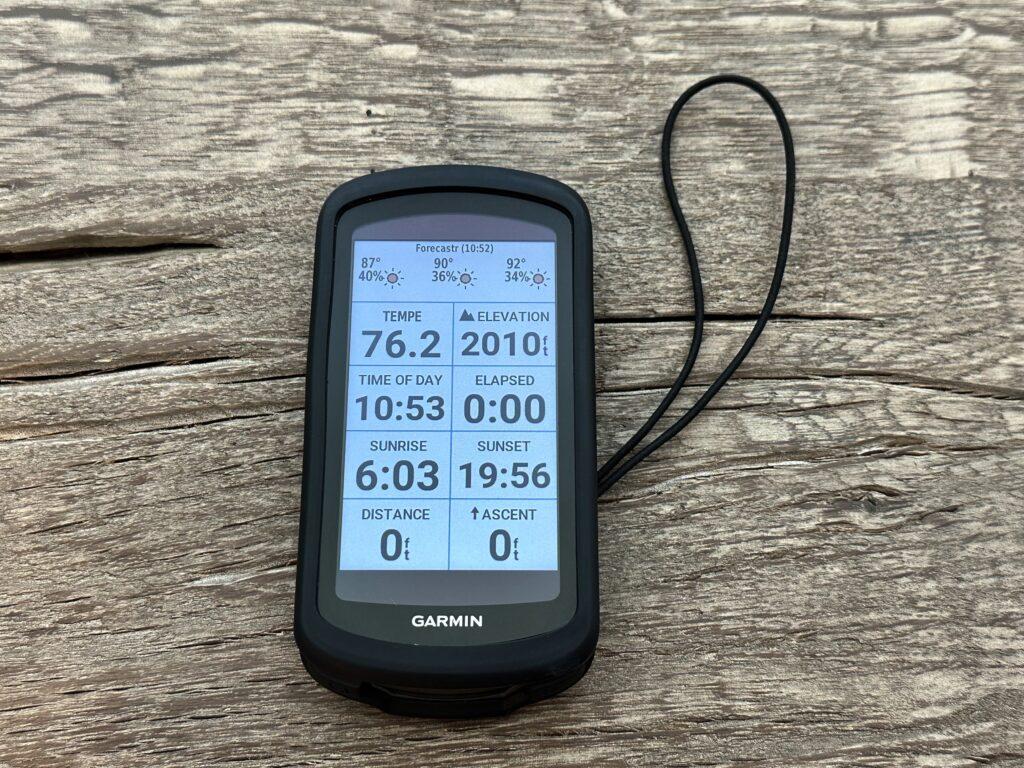
But the real testament to its performance is in the data it delivers. In a comparative analysis from my recent ride to Mount Pinos and Cerro Noroeste, the disparities between the readings from the Garmin Edge’s built-in sensor and the Tempe sensor were stark. The graph from Garmin Connect, which I’ve included below, paints a clear picture.
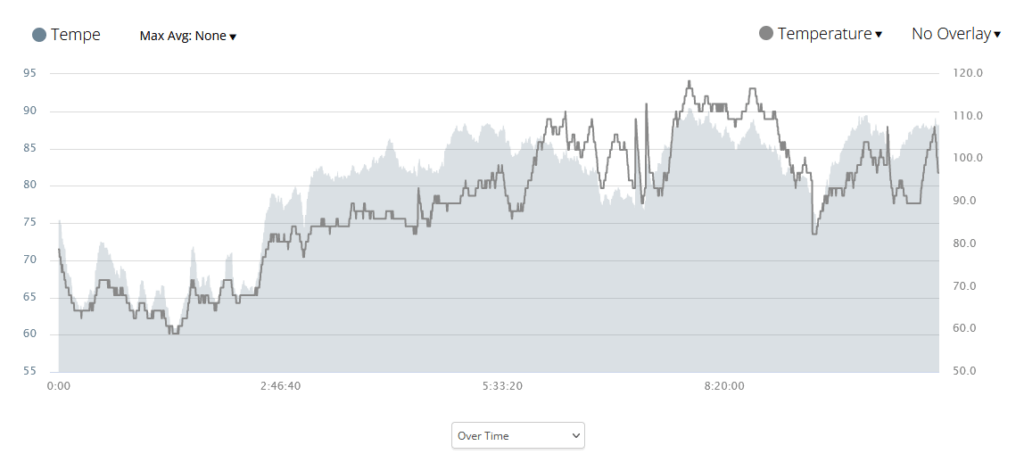
The data tells a compelling story: for riders like myself, striving for optimal performance and needing precise environmental information, devices like the Garmin Tempe sensor are invaluable. In the chart above, for example, the Garmin Edge’s internal temperature sensor reported temperatures exceeding 80ºF, when in reality, they were closer to 75ºF. These data points are far enough apart and fall within two distinctly different temperature ranges, potentially resulting in less-than-optimal decisions and/or application of heat management strategies.
Why not just rely on weather data? As pictured above, I am using the WF Forecastr data field by scottbeam, which provides a three-hour weather forecast. As great as this field is about giving me a preview of the conditions I am likely to encounter, there are some limitations. First, the temperature is the temperature taken at the weather station, not my precise location, so it may be different, particularly because I am moving. In addition, if there is no cellular data service in my current location, it is possible that the weather forecast has not been updated.
On the other hand, weather data is also important, and we cannot rely on temperature alone. Factors such as wind speed and direction, humidity, cloud cover, and elevation can also play a role in both our perceptions of heat and our physiological responses to the heat.
My Experience and Experimentation
During my recent rides, especially the ones heading towards Mt Pinos and Cerro Noroeste in the heat of Southern California, these temperature-based strategies were not just theoretical — they were crucial for my performance and well-being. On one particularly scorching day, with temperatures recorded upwards of 90°F, my Garmin Edge’s internal sensor served as a stark reminder of the relentless heat. While that data might have been affected by the device’s own heat, the recent addition of the Garmin Tempe sensor gave a more accurate reading, and enabled me to make appropriate adjustments in my hydration, nutrition, and pacing.
Knowing the exact ambient temperature, I realized early on that I was entering the 80-95°F range and subsequently the 95°F+ domain. This knowledge prompted me to start using ice socks to cool my core temperature earlier in the ride, before I started to feel too hot. In addition, I began to shift my hydration strategy drastically, before the effect of the heat put me in a hole that I could not climb out of. Instead of my usual intake, I was consuming closer to 1.5L/hr, ensuring I was sipping regularly rather than taking big gulps. I can’t emphasize enough how essential my electrolyte drinks were in maintaining my salt balance and preventing cramps.
The intensity of the heat also influenced my nutrition. On past rides in cooler temperatures, I would rely primarily on gels and bars. However, in this heat, my stomach turned at the thought of solid food, particularly as the heat climbed above 90ºF. Switching to liquid nutrition made a significant difference, providing the energy I needed without causing any digestive discomfort. (This also helped me to increase my hydration too!)
Pacing was another area where the temperature’s impact was palpable. I often remind myself of the mantra, “suffering is temporary,” but in such conditions, wisdom prevailed over sheer willpower. Accepting the heat as a factor that ultimately everyone on the course would experience, I reasoned that a reduction in intensity to the lower end of my power zone 2 would ultimately provide more benefit than adhering rigidly to a target wattage or powering through at a higher intensity. As I look forward to Hoodoo 300, where the hottest part of the ride will be between mile 40 and mile 150, I realize that it will be important to conserve energy during this part of the course, so that I am better able to push the pace on the tougher parts of the course and the last half of the race, when the temperatures are more conducive to higher intensities.
In retrospect, these rides in the run-up to Hoodoo 300 were not just about building endurance and strength; they were about learning the importance of adapting to external conditions. The lessons on temperature awareness, ones I once relegated to the background, suddenly took center stage — ensuring not just a better performance but also my safety and well-being on the bike.
In the demanding world of endurance cycling, every piece of information matters. As I continue my preparations and training rides, having accurate temperature data will undoubtedly play a role in my strategies and decision-making processes.
